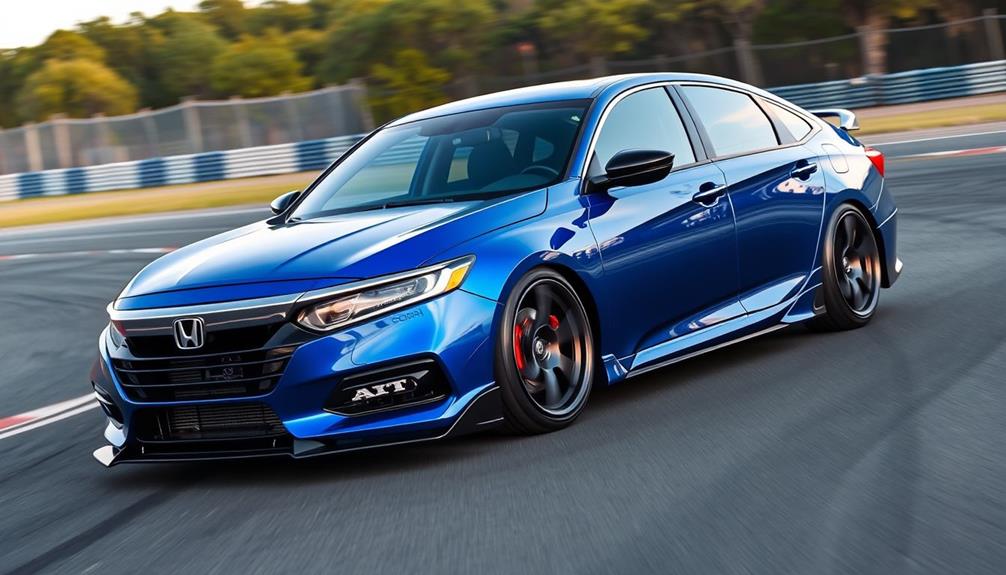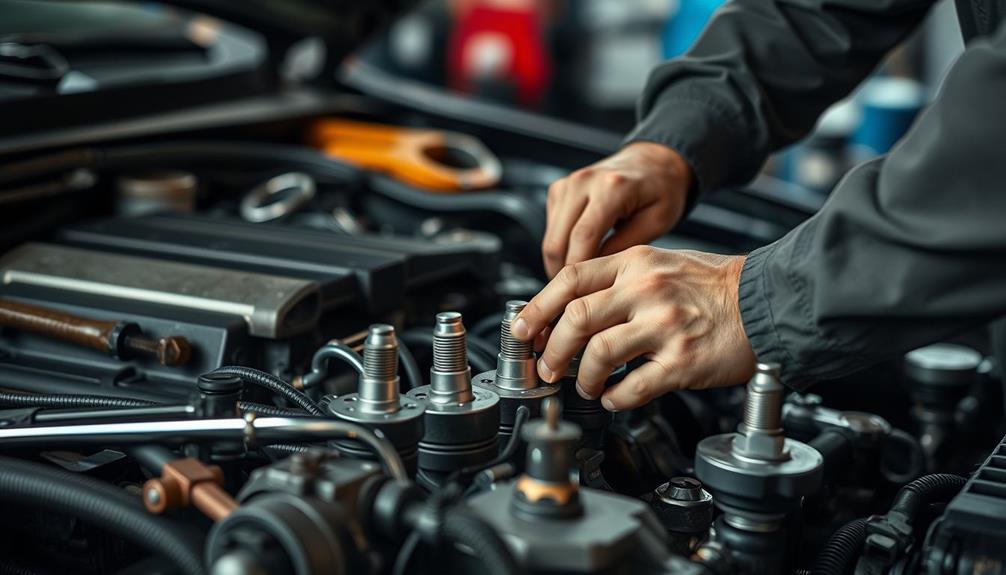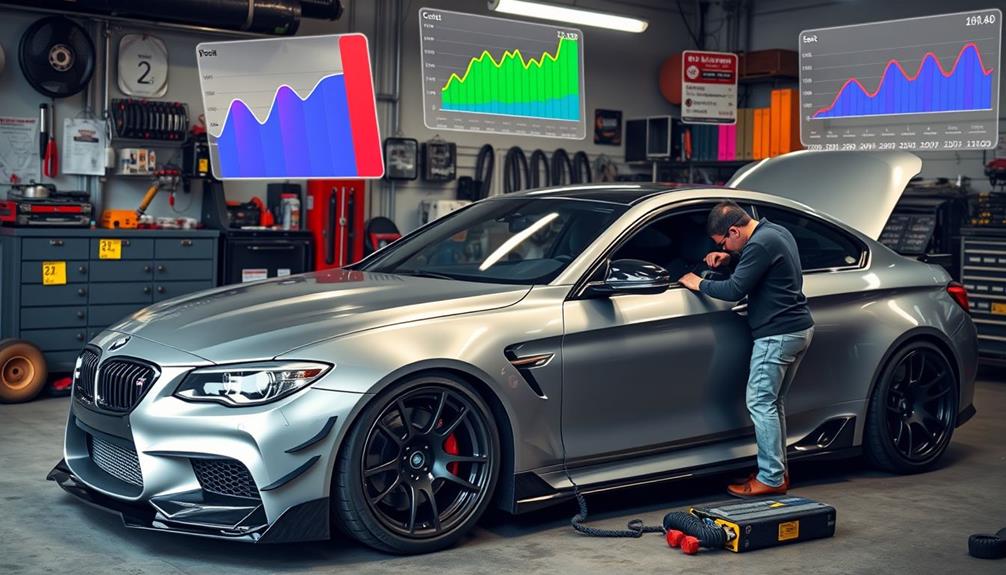To determine the tune-up your car needs, start by checking your owner's manual for the recommended maintenance schedule. Look for signs like rough idling, decreased fuel economy, or unusual engine noises, which indicate it's time for a tune-up. Essential tasks typically include replacing spark plugs, changing oil and filters, and inspecting the ignition system. For older vehicles, consider more frequent tune-ups, especially if you drive in harsh conditions. Customizing your maintenance plan enhances performance and longevity, ensuring your vehicle runs smoothly. You might be interested in discovering more about specific services tailored to your car's needs.
Key Takeaways
- Consult your vehicle owner's manual for the recommended maintenance schedule and tune-up intervals specific to your model.
- Assess your driving habits; frequent short trips may require more frequent tune-ups than longer highway drives.
- Consider the age and mileage of your vehicle; older cars often need additional inspections and maintenance.
- Monitor your vehicle's performance regularly using diagnostic tools to identify specific service needs and adjust your maintenance plan accordingly.
- Research and choose a reputable service provider that specializes in your vehicle make and model for tailored maintenance.
Understanding Car Tune-Ups
A car tune-up is essential for keeping your vehicle running smoothly and efficiently. It involves a series of maintenance tasks aimed at enhancing engine performance and longevity. Regular tune-ups are vital, as they help prevent small issues from becoming major problems. Some common signs that indicate a car may need a tune-up include rough idling, decreased fuel efficiency, and difficulty starting the engine. By addressing these car maintenance signs promptly, you can prevent more costly repairs down the road. Additionally, scheduling regular tune-ups can help prolong the life of your vehicle and ensure it remains safe to drive.
Typically, older vehicles require a tune-up every 10,000 miles, while newer models should have them done at least once a year.
During a car tune-up, key components like spark plugs are replaced, and fuel and air filters are changed. You'll also get oil changes and inspections of the ignition system and fluid levels.
These maintenance tasks directly impact your vehicle's fuel economy, ensuring you get the best mileage possible. Ignoring the need for a tune-up can lead to triggering the check engine light, indicating more severe issues down the road.
Signs You Need a Tune-Up

Recognizing when your vehicle needs a tune-up can save you from costly repairs down the line. One of the first signs is rough idling or engine misfire, which often indicates that your spark plugs or ignition system need attention.
If you find yourself visiting the gas station more frequently, decreased fuel economy could be a sign of engine inefficiencies, signaling the need for maintenance.
Unusual engine noises, like knocking or pinging, shouldn't be ignored either; they can point to underlying issues that require immediate attention.
Additionally, if your car struggles to start, this could signal problems with the fuel delivery or ignition system, further emphasizing the necessity of a tune-up.
Lastly, the ever-dreaded check engine light is a clear indicator that something isn't right. It often signifies engine or emissions system problems, making it vital to schedule a tune-up to diagnose and rectify these issues.
Key Components of a Tune-Up
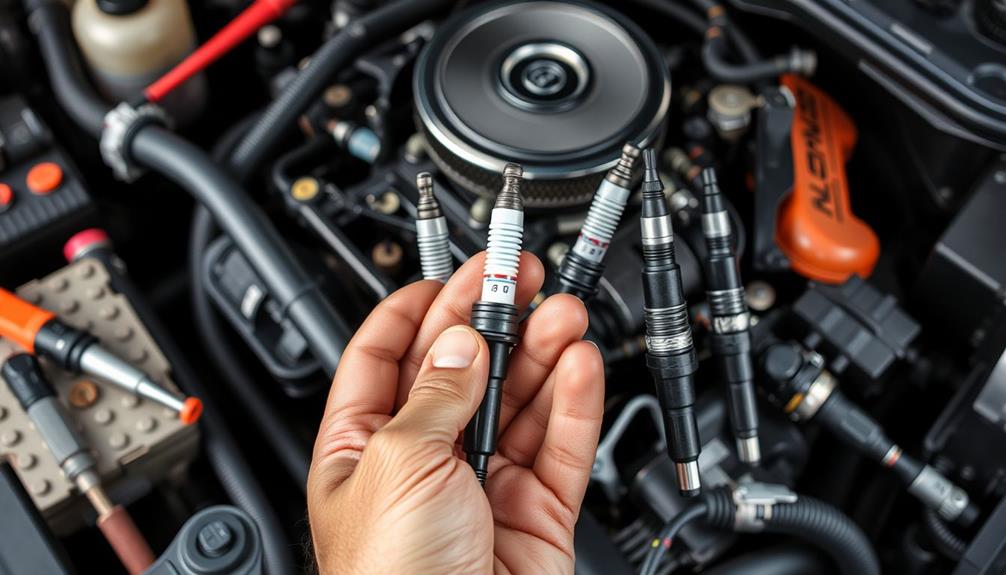
Regular tune-ups are vital for keeping your car running smoothly and efficiently. A thorough tune-up service addresses key engine components that directly impact your vehicle's performance and efficiency. One of the main tasks involves replacing spark plugs every 30,000 to 40,000 miles, guaranteeing ideal combustion for better engine operation.
Additionally, important filters like air, fuel, and oil filters are replaced. This step maintains proper airflow and fuel delivery while protecting your engine from harmful contaminants.
Oil changes are another significant part of regular maintenance, with synthetic oils needing replacement every 7,500 to 15,000 miles based on manufacturer recommendations.
Don't forget about inspecting belts and hoses, as belts typically last between 50,000 to 100,000 miles, while hoses should be checked for leaks and wear.
Regular inspections of the ignition system, battery, and brakes are also essential for safe vehicle operation. By keeping up with these service intervals, you can guarantee your car remains reliable and performs at its best.
Prioritizing these key components during your tune-up will help you maintain your vehicle for years to come.
Customizing Your Maintenance Plan
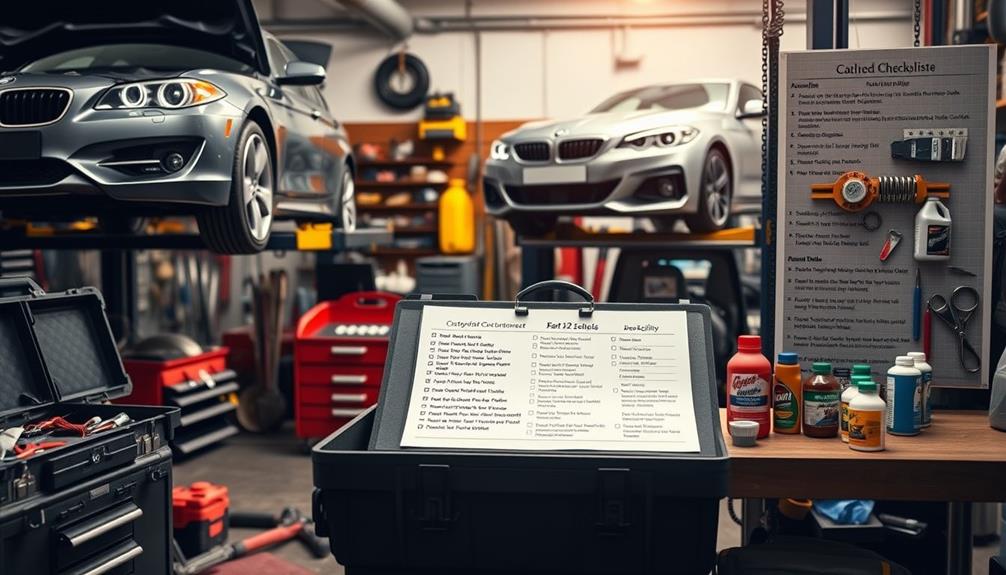
Customizing your maintenance plan is essential for keeping your car in top shape and ensuring it meets your specific needs.
Start by reviewing your vehicle's owner's manual to understand the recommended maintenance schedule and intervals. Here's how to tailor your plan:
- Driving Conditions: Evaluate your driving habits. If you frequently take short trips, tow heavy loads, or drive in harsh environments, you'll need more routine maintenance and tune-ups compared to typical highway driving.
- Vehicle Age: Pay attention to the age and mileage of your vehicle. Older vehicles or those exceeding 100,000 miles may require extra inspections and part replacements to keep everything running smoothly.
- Monitor Performance: Utilize diagnostic tools to monitor engine performance regularly. This allows you to identify specific service needs and adjust your maintenance plan accordingly.
Choosing the Right Service Provider
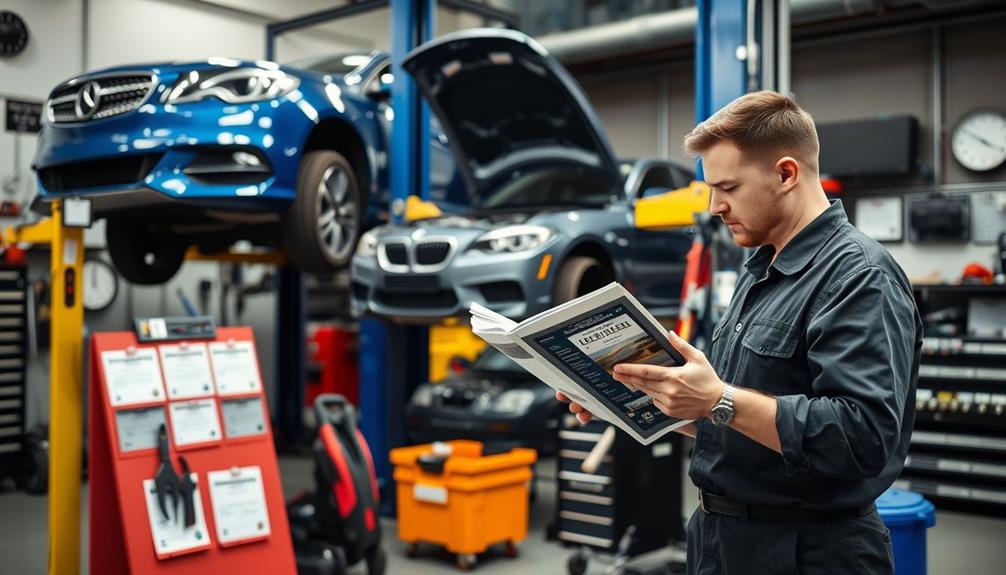
Selecting the right service provider for your car maintenance is essential for guaranteeing quality care and reliable performance. Start by researching local repair shops, focusing on those that specialize in your vehicle's make and model. Online reviews and ratings can help you find a reputable provider known for their expertise.
Don't hesitate to inquire about the qualifications of the technicians. Verified certifications indicate they've the necessary skills to handle your specific maintenance needs.
Once you've narrowed down your options, request estimates from multiple shops. This not only helps you compare prices but also allows you to understand the details of the services offered during your tune-up.
Additionally, look for shops that provide warranty coverage on parts and labor. This warranty gives you peace of mind regarding any repairs performed.
Finally, consider the convenience of the shop's location and scheduling. Choosing a nearby, easily accessible service provider can make it simpler to maintain regular maintenance without added stress.
Frequently Asked Questions
What Does a Full Tune-Up Include?
A full tune-up includes replacing spark plugs, changing engine oil and filters, and inspecting ignition wires, belts, and hoses. You'll also want to make certain air and fuel filters are clean for peak performance.
What Is the Average Cost of a Full Tune-Up?
When considering a tune-up, you'll find costs typically range from $200 to $800, depending on your vehicle's needs. Always check your owner's manual for specific recommendations to guarantee you're not throwing your cash out the window.
What Needs to Be Changed When Bringing in a Car for a Tune-Up?
When you bring your car in for a tune-up, you'll want to change spark plugs, air filters, and oil. Don't forget to check fuel filters and PCV valves for peak performance and efficiency.
What Is the Difference Between Tune-Up and Maintenance?
You've got engine magic and vehicle wizardry at play! While tune-ups zap performance issues like misfires, maintenance keeps everything running smoothly. Think of tune-ups as the superhero and maintenance as the loyal sidekick!
Conclusion
Just like a gardener tends to each plant, nurturing it to bloom, you need to care for your car to keep it performing at its best. Regular tune-ups are the sunlight and water, ensuring every engine part flourishes. By recognizing the signs and customizing your maintenance, you'll cultivate a reliable vehicle that thrives on the road. So, don't wait for the weeds to overtake your ride—tend to your car, and it'll reward you with smooth journeys ahead.

